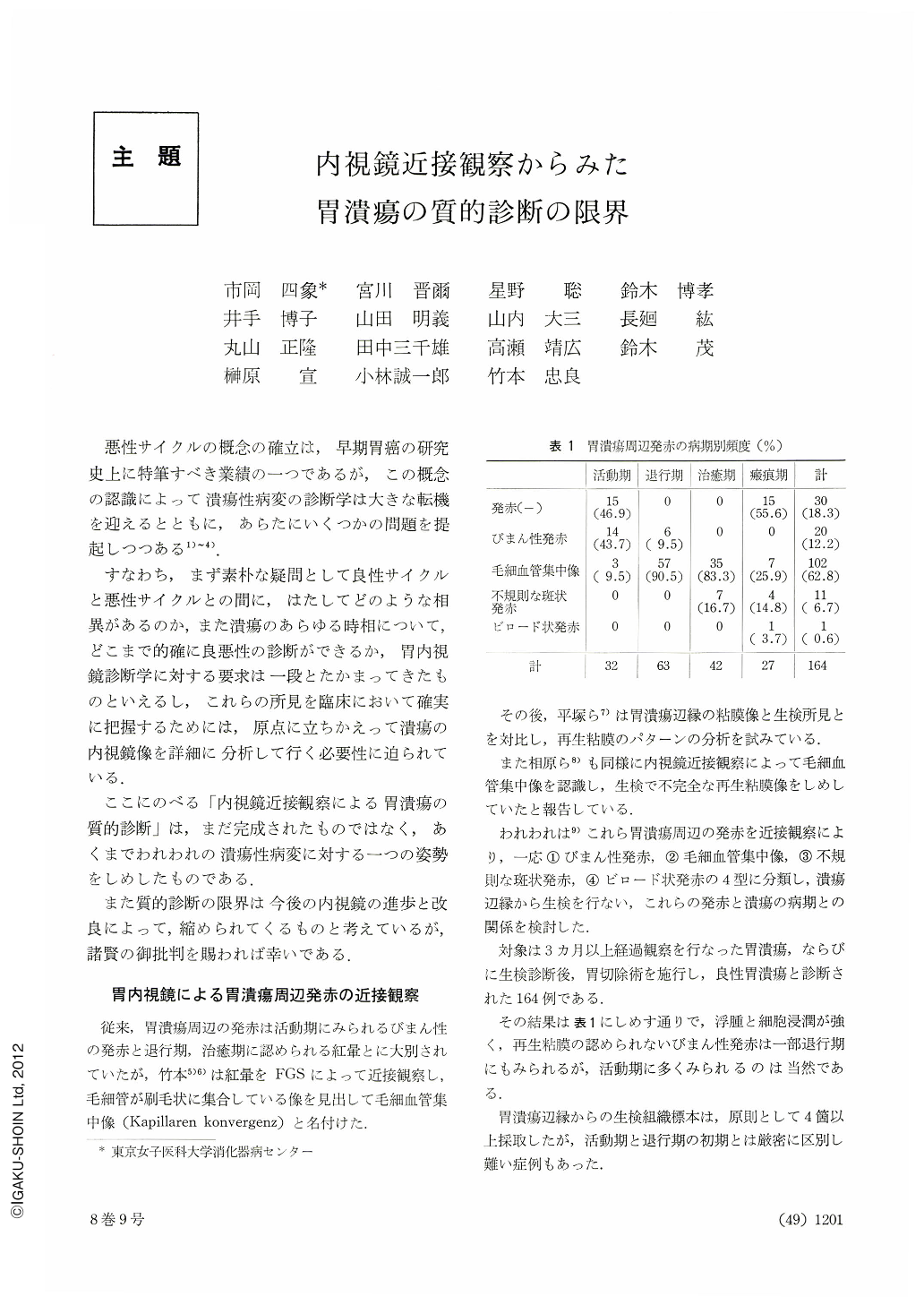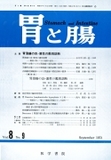Japanese
English
- 有料閲覧
- Abstract 文献概要
- 1ページ目 Look Inside
悪性サイクルの概念の確立は,早期胃癌の研究史上に特筆すべき業績の一つであるが,この概念の認識によって潰瘍性病変の診断学は大きな転機を迎えるとともに,あらたにいくつかの問題を提起しつつある1)~4).
すなわち,まず素朴な疑問として良性サイクルと悪性サイクルとの間に,はたしてどのような相異があるのか,また潰瘍のあらゆる時相について,どこまで的確に良悪性の診断ができるか,胃内視鏡診断学に対する要求は一段とたかまってきたものといえるし,これらの所見を臨床において確実に把握するためには,原点に立ちかえって潰瘍の内視鏡像を詳細に分析して行く必要性に迫られている.
Determination by gastric endoscopy of whether a given gastric ulcer is benign or malignant is usually based on the nature of the mucosal folds around it and also on the presence or absence of a IIc type lesion in its neighborhood. However, discrimination of a benign ulcer from a III type early cancer or an atypical III+IIc lesion still harbors some difficulties.
In the past we have studied endoscopic close-up observation of epithelial regeneration around an ulcer which is considered as one of its repairing process. Our conclusion drawn therefrom is that accurate evaluation of epithelial regeneration can be an important help in determining whether a gastric ulcer is benign or malignant.
Close-up study of benign ulcers by means of FGS-BL, PFS-F II and GIF-D seems to indicate that the shapes of regenerating epithelia can be divided into four: yamayuri (lilium serrulata) type, azami (thistle) type, nogiku (wild camomile) type and a mixture of yamayuri and azami types. Characteristics of the four types have been compared with histologic pictures of biopsy. As a result, it has been found that configuration of regenerating epithelia can be determined by inflammatory changes and the degree of mucosal repair. Transition from one type to another was observed in the course of ulcer evolution.
Close-up study of III+II c and IIc+III lesions disclosed in most cases mucosal reddening similar to that seen diffusely in the active stage of benign ulcer. In a few cases regenerating epithelia were demonstrated around type III lesion. Histologic investigation confirmed the site of mucosal repair as ‘sanctuary’.
Differentiation between regenerating epithelia around an ulcer and cancerous erosions is now considered possible to a certain degree. This possibility may afford us a clue to endoscopic diagnostic approach to type III early gastric cancer.

Copyright © 1973, Igaku-Shoin Ltd. All rights reserved.


